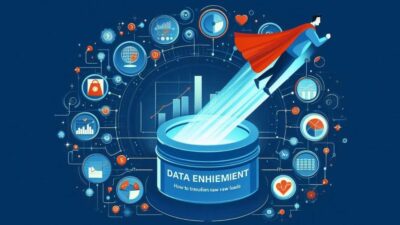
AI-powered Sales Development Representatives (SDRs) are transforming outbound and inbound sales—but are you measuring their impact correctly? Tracking the right metrics ensures your AI-driven team maximizes efficiency, improves conversion rates, and drives revenue.
In this guide, we’ll break down the seven most critical AI SDR performance metrics, compare inbound vs. outbound SDR teams, and show you how to analyze data for continuous improvement.
- Response Rate: Are Prospects Engaging?
Your AI SDR’s response rate measures how many prospects reply to emails, calls, or LinkedIn messages. A low response rate could mean:
- Poor lead targeting
- Weak messaging
- Over-automation (lacking personalization)
Benchmark: Top-performing SDRs achieve 15-25% response rates in cold outreach (Sales Insights Lab).
How to improve:
- A/B test subject lines and opening hooks
- Use AI tools like PhantomBuster for hyper-personalized messaging
- Adjust outreach timing based on prospect behavior
- Conversion Rate: From Contact to Opportunity
Not all responses turn into qualified leads. Track how many prospects move to the next stage (e.g., booking a demo).
| Team Type | Avg. Conversion Rate |
| Inbound SDRs | 20-30% |
| Outbound SDRs | 5-15% |
Why it matters: If your AI SDR has a high response rate but low conversions, refine qualification criteria or improve follow-up sequences.
- Lead Response Time: Speed Wins Deals
Research by Harvard Business Review shows that responding within 5 minutes increases lead conversion by 21x. AI SDRs should:
- Automate instant replies
- Flag high-intent leads for immediate follow-up
- Use chatbots to engage website visitors in real time
- Opportunity-to-Win Rate: Closing Efficiency
How many demos or meetings turn into closed deals? A low win rate may indicate:
- Poor lead qualification
- Misalignment between SDR and AE handoffs
- Weak sales collateral
Fix it with:
- AI-driven lead scoring (HubSpot)
- Better sales enablement materials
- Regular feedback loops between SDRs and AEs
- Activity Volume: Is Your AI SDR Working Smart?
Track daily/weekly:
- Emails sent
- Calls made
- LinkedIn connections
But don’t just chase numbers—quality over quantity. AI tools like Outreach.io optimize outreach sequences to avoid spammy behavior.
- Customer Acquisition Cost (CAC): ROI of AI SDRs
Calculate:
Copy
CAC = Total SDR Team Cost / Number of Customers Acquired
If CAC is too high, reassess:
- Lead sources
- Conversion funnel efficiency
- AI tool ROI
- Pipeline Contribution: Revenue Impact
Your AI SDR should directly influence revenue. Track:
- Deals influenced
- Pipeline generated
- Revenue attribution
Tools like Salesforce help measure pipeline impact accurately.
Inbound vs. Outbound SDR Teams: Key Differences
| Metric | Inbound SDRs | Outbound SDRs |
| Lead Source | Website forms, chats, referrals | Cold emails, LinkedIn, ads |
| Conversion Rate | Higher (20-30%) | Lower (5-15%) |
| Response Time | Critical (<5 min) | Less urgent (hours OK) |
| Personalization | Moderate (context-aware) | High (hyper-personalized) |
Best Practice: Use AI to blend both strategies—automate inbound follow-ups while scaling outbound prospecting.
How to Measure & Analyze SDR Metrics for Success
- Set Clear KPIs (e.g., 15% response rate, 10% conversion).
- Use AI Analytics (e.g., Gong for call tracking).
- Run Weekly Reviews—identify trends and adjust strategies.
Boost Your Team’s Efficiency with AI SDRs
AI isn’t just automating tasks—it’s enhancing human performance. To maximize results:
- Train AI with real sales call data for better messaging.
- Combine AI + human touch for high-value deals.
- Continuously optimize based on metrics.
Track, Analyze, Optimize
The best sales teams don’t just use AI—they measure its impact. By tracking these 7 metrics, you’ll ensure your AI SDRs drive real revenue, not just activity.
Ready to upgrade? Start with a free trial of Salesix AI and see the difference AI can make.
(FAQs)
- What’s the most important metric to track for AI SDRs?
While all metrics matter, conversion rate (from contact to opportunity) is critical because it shows whether your AI SDR is generating qualified leads—not just activity. A high response rate with low conversions means messaging or targeting needs adjustment.
2. How can AI improve lead response time?
AI-powered SDRs can instantly engage leads via chatbots, automated email replies, and real-time call routing. Studies show that responding within 5 minutes boosts conversions by 21x (Harvard Business Review).
3. What’s a good response rate for outbound AI SDRs?
Top-performing outbound SDRs achieve 15-25% response rates on cold outreach. If yours is lower, test different subject lines, personalization tactics, and timing to improve engagement.
4. How do inbound and outbound SDR metrics differ?
- Inbound SDRs typically have higher conversion rates (20-30%) since leads already show interest.
- Outbound SDRs see lower conversions (5-15%) but can scale prospecting with AI automation.
5. Can AI SDRs replace human SDRs?
Not entirely. AI excels at handling repetitive tasks, qualifying leads, and scaling outreach, but human SDRs are better at complex negotiations and relationship-building. The best strategy is a hybrid approach.
6. How do I reduce Customer Acquisition Cost (CAC) with AI SDRs?
- Optimize lead targeting to avoid wasted outreach.
- Improve conversion rates with better messaging and follow-ups.
- Use AI analytics (like Gong) to refine strategies and cut inefficiencies.





[…] by advancements in natural language processing (NLP) and machine learning, these digital assistants are no longer just novelty tech, they’re essential […]